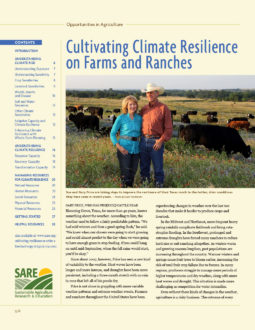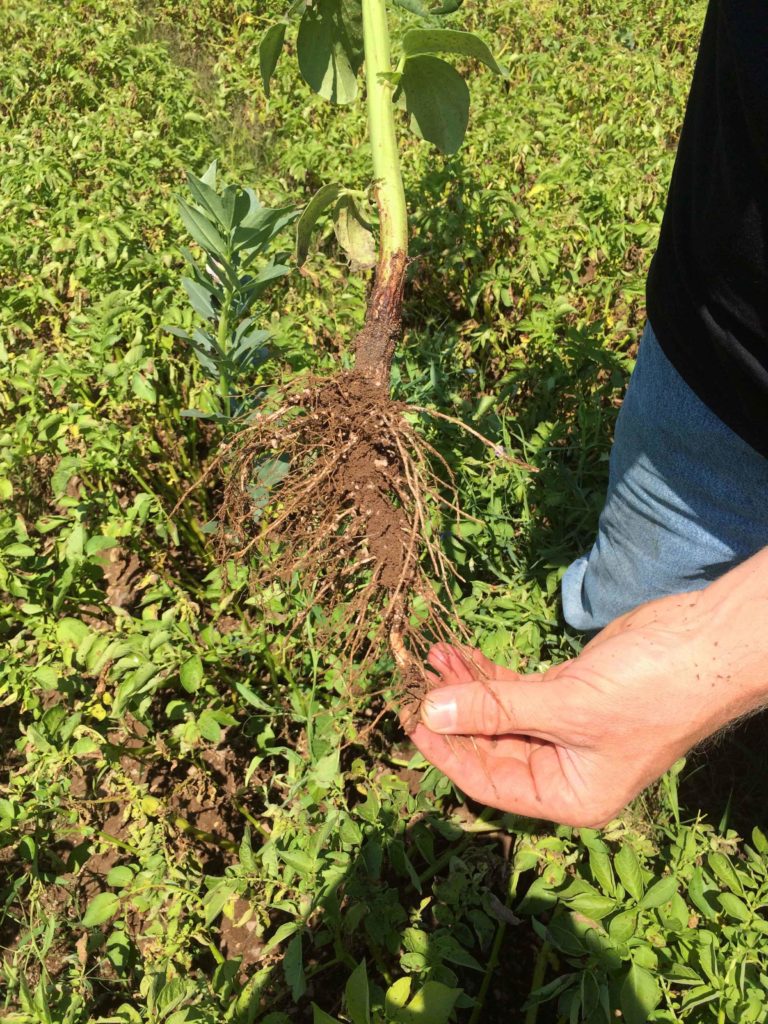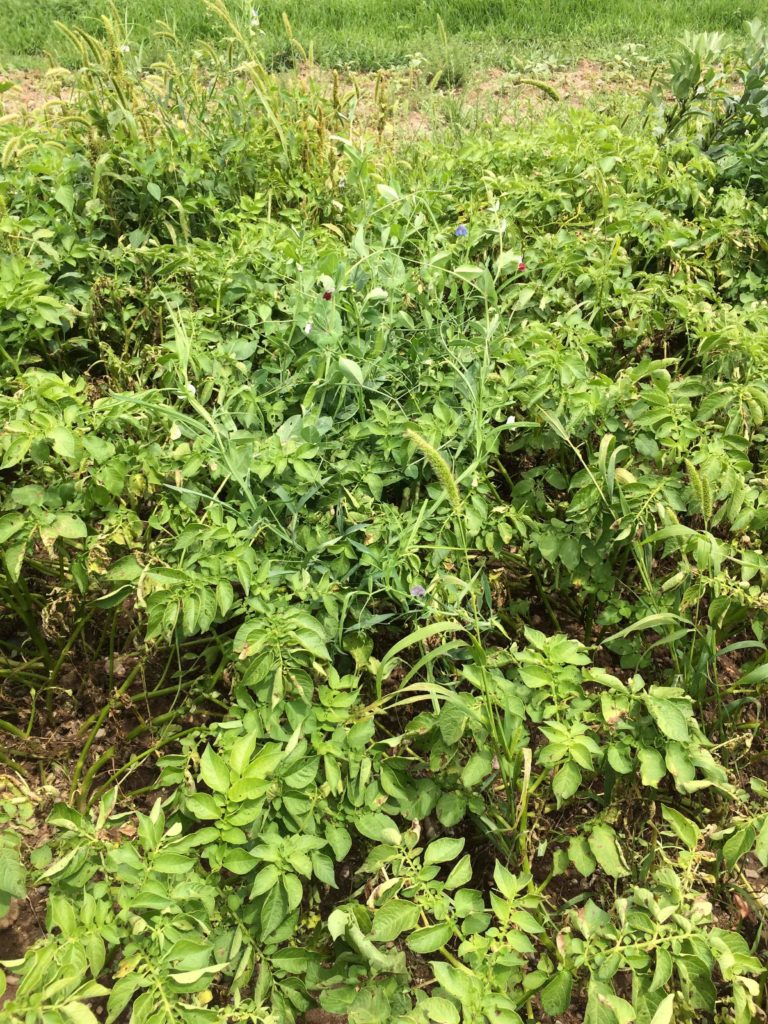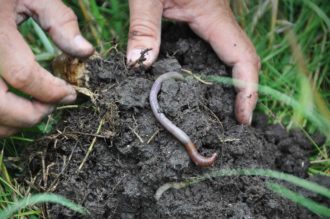A healthy natural resource base contributes to the climate resilience of your operation by buffering the effects of greater weather variability and extremes. Healthy soils, an adequate supply of clean water, robust crops and livestock that are well-adapted to your farming system, and diverse habitats that support beneficial organisms and other wildlife can reduce the impact of expected and unexpected weather-related events that increase costs and reduce yields and product quality.
Diversified production systems are climate-resilient when they are designed and managed to promote two ecological functions: functional and response diversity. Functional diversity means that your farm or ranch can support the ecosystem services that contribute to crop and livestock production. These ecosystem services can include the regulation of soil health, water quality and quantity, nutrient cycling, decomposition of wastes, the suppression of pests, crop pollination and climate protection (e.g., flood control, wind and temperature moderation).
Response diversity means that your operation can remain productive under a wide range of conditions that are potentially disruptive. There are usually a number of species capable of supporting a particular ecosystem service, and they will often perform best under different environmental conditions (hot, cold, wet, dry, high or low nutrient availability). In diversified production systems, when conditions prevent one species from providing a critical ecosystem service, others may be present and able to step in. For example, in a diverse cover crop mix or hedgerow planting, plant species with lower water needs can support pollinators and keep the ecosystem service of crop pollination going if drought conditions should occur, while other species in the planting are available to continue this function under normal or high-moisture conditions.
“We work to enhance those ecosystem services, as they’re called, by continually planting more trees, more shrubs, more crops for pollinators, more windbreaks and more wildlife habitat,” said Harlan, Iowa, farmer Ron Rosmann. “The diversity is what will continue to play a big role for us.”
Many common sustainable agriculture practices promote healthy natural resources and ecological processes that are proven to buffer climate effects, including:
- diversified production systems that integrate cover crops, annual and perennial crops, livestock and wildlife
- planned diversity and integration of crops and livestock, including diversity in cultivar, species and age, across the landscape and through time
- diversified sources, including on-farm production, of critical production inputs such as energy, nutrients, water and seeds
- reduced tillage practices
- on-farm waste recycling, including the use of compost and manure
- intensive grazing strategies
- biointensive integrated pest management
- value-added enterprises
- diversified marketing strategies
- whole-farm adaptive management
A longtime grower of certified seed potatoes and fresh market potatoes in Center, Colo., Brendon Rockey decided to drop barley from his two-year potato/barley rotation about 10 years ago and replace it with a mixed cover crop as a way to decrease water use. (See the section “Cover Crop Cocktails.”) The change reduced annual water use in his operation by about 14 inches, and the switch had some other significant and unexpected benefits. “Bringing in a diverse cover crop improved our soil health so much that it had a huge impact on the productivity of our potato crop,” Rockey said. The increase in soil health reduced input costs and increased potato quality so dramatically that Rockey found it was more profitable to grow one cash crop every two years than one cash crop every year.
Livestock producers can improve natural resources by using production practices that build soil health, diversified crop rotations that include annual forages, rotational grazing practices and perennial forage species that are better adapted to growing conditions, like Gary Price did when he restored native tallgrass prairies to his Texas ranch. You can also select for animals that are well adapted to your production system, available markets and local environmental conditions.
On his North Dakota ranch, Gabe Brown has made changes to improve natural resources, particularly the soil, and to better fit his livestock production system to local environmental conditions. Back in the mid-90s, he suffered four years of back-to-back weather-related crop losses. Short on funds and unable to qualify for a production loan, Brown lacked the money to purchase fertilizers and pesticides, so he had to come up with a different strategy. “Since that time, I’ve focused on the soil resource and on improving the water cycle, energy cycle and nutrient cycle using holistic management practices,” Brown said.
The average soil organic matter level at his ranch is now about 5 percent, and the soil infiltration rate has increased from 0.5 inches per hour to 8 inches per hour. According to Brown, the most effective climate-risk management tool that he has is the capacity of his ranch’s healthy soils to buffer more variable rainfall and temperatures. Similar to Price, Brown uses management-intensive grazing and grazes his cattle on native prairie, improved pastures and annual cover crops. He also carefully selects cattle. “With the way we manage our livestock operations, there are very few weather-related events that will affect our animals,” Brown said. “Due to our selection process the cattle are now more adapted to our environment. We raise cattle in a much more natural way now.”
Healthy Soil Cultivates Climate Resilience
High-quality soil is one of the most effective natural-resource-based climate risk management tools available to agricultural producers. “If you can improve your soil resource and make those soils more resilient, you’ll be able to weather those extremes in moisture and temperature much more easily,” said North Dakota crop and livestock farmer Gabe Brown. “I can easily go through a two-year drought and it does not affect our operation to any great extent because the soil is so much more resilient.”
Crop production practices that improve soil health include conservation tillage, the use of cover crops and the integration of livestock. Farmers and ranchers across the country are recognizing more and more the great value of protecting and enhancing the health of their soils through the use of such practices.
In February 2014, the first National Conference on Cover Crops and Soil Health, organized by SARE and the Howard G. Buffett Foundation, brought together 300 leaders in farming, academia, government, agribusiness and natural resource conservation to discuss how widespread use of cover crops could contribute to a more sustainable American agriculture. In conjunction with the conference, about 6,000 farmers took part in cover crops and soil health forums at USDA Natural Resources Conservation Service and Cooperative Extension offices across the country. Participants in these forums shared experiences and discussed strategies—such as policy incentives and barriers, research and education—to encourage the adoption of soil-improving practices. A follow-up conference was held in 2017.
Regional multi-day workshops on cover crops and soil health were subsequently held by Northeast SARE and Southern SARE in 2016.
Workshop recordings and other resources from these events are online.



